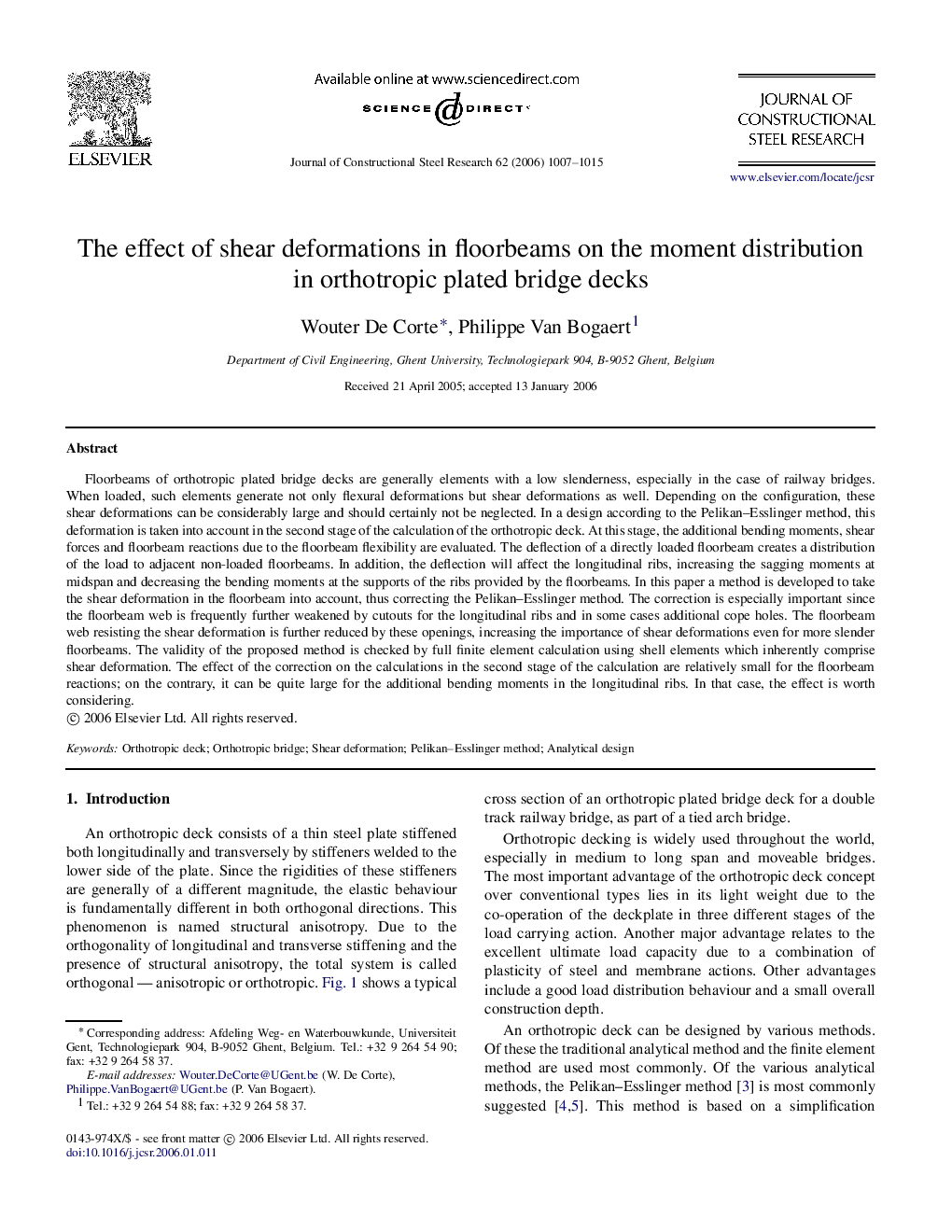| Article ID | Journal | Published Year | Pages | File Type |
|---|---|---|---|---|
| 285998 | Journal of Constructional Steel Research | 2006 | 9 Pages |
Floorbeams of orthotropic plated bridge decks are generally elements with a low slenderness, especially in the case of railway bridges. When loaded, such elements generate not only flexural deformations but shear deformations as well. Depending on the configuration, these shear deformations can be considerably large and should certainly not be neglected. In a design according to the Pelikan–Esslinger method, this deformation is taken into account in the second stage of the calculation of the orthotropic deck. At this stage, the additional bending moments, shear forces and floorbeam reactions due to the floorbeam flexibility are evaluated. The deflection of a directly loaded floorbeam creates a distribution of the load to adjacent non-loaded floorbeams. In addition, the deflection will affect the longitudinal ribs, increasing the sagging moments at midspan and decreasing the bending moments at the supports of the ribs provided by the floorbeams. In this paper a method is developed to take the shear deformation in the floorbeam into account, thus correcting the Pelikan–Esslinger method. The correction is especially important since the floorbeam web is frequently further weakened by cutouts for the longitudinal ribs and in some cases additional cope holes. The floorbeam web resisting the shear deformation is further reduced by these openings, increasing the importance of shear deformations even for more slender floorbeams. The validity of the proposed method is checked by full finite element calculation using shell elements which inherently comprise shear deformation. The effect of the correction on the calculations in the second stage of the calculation are relatively small for the floorbeam reactions; on the contrary, it can be quite large for the additional bending moments in the longitudinal ribs. In that case, the effect is worth considering.
